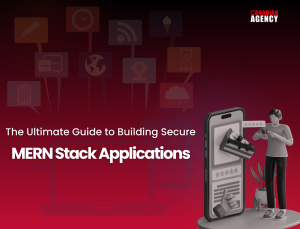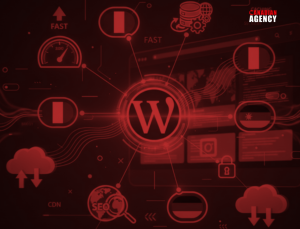Why Edge Computing Matters Today
Modern applications are no longer simple, single-server systems. Businesses today demand fast, secure, and reliable digital experiences. Whether it is a mobile app that streams video, an e-commerce platform handling thousands of transactions, or a collaboration tool used globally, users expect near-instant performance.
Traditionally, cloud computing provided the scalability and flexibility developers needed. But as data volumes grow and users demand real-time interaction, relying solely on centralized cloud servers introduces latency, bandwidth costs, and privacy challenges.
This is where edge computing comes in. By handling data near the user — at the “edge” of the network — apps and websites can provide quicker responses, lower infrastructure expenses, and enhanced security.
What is Edge Computing in Simple Terms?
Edge computing is the technique of bringing computation and data storage nearer to where it is required — usually near the end user or device — rather than solely depending on remote cloud data centers.
In web and app development, this means shifting parts of your application logic, data caching, or processing tasks to edge servers distributed globally. Content delivery networks (CDNs) and edge platforms like Cloudflare Workers, AWS Lambda@Edge, or Vercel Edge Functions allow developers to run code at nodes that are geographically near end users.
The result? Lower latency, reduced bandwidth usage, and faster digital experiences.
Key Use Cases of Edge Computing in Web & App Development
Edge computing is not just a buzzword. It has real, practical applications across industries and technologies. Let’s explore some major use cases.
1. Real-Time User Experiences
- Online gaming platforms rely on edge computing for ultra-low latency, ensuring smooth gameplay.
- AR/VR applications benefit from edge logic to reduce lag and enhance immersion.
- Video streaming apps use edge servers to deliver content with minimal buffering.
2. Faster E-Commerce Platforms
In e-commerce, page load speed directly impacts conversions. Edge computing powers:
- Personalized product recommendations are rendered closer to the user.
- Inventory updates that sync quickly across regions.
- Payment validation is handled securely at the Edge.
3. IoT and Smart Devices
Edge computing processes sensor data locally before sending only the necessary information to the Cloud. This is vital in:
- Smart homes (real-time device communication).
- Industrial IoT (quick machine diagnostics).
- Healthcare IoT (faster medical data analysis).
4. Enhanced Security and Compliance
By running authentication and data filtering at the Edge, apps can:
- Stop malicious traffic before it reaches the core infrastructure.
- Enforce regional compliance rules (GDPR, HIPAA).
- Reduce risks of centralized data breaches.
5. AI and Machine Learning at the Edge
Edge AI allows apps to analyze data locally and deliver real-time insights. For example:
- Retail apps using edge AI for demand forecasting at regional levels.
- Mobile apps using on-device inference for image recognition without cloud dependency.
Popular Tools & Platforms for Edge Computing
To implement edge computing, developers rely on specialized edge platforms and tools. Some of the most widely used include:
1. Cloudflare Workers
- A serverless platform that lets you run JavaScript, Rust, or C code on Cloudflare’s global edge network.
- Ideal for building APIs, caching content, and delivering server-side rendered apps closer to users.
2. AWS Lambda Edge
- An extension of AWS Lambda that runs code in response to CDN events.
- Great for dynamic content delivery and customizing user experiences per request.
3. Vercel Edge Functions
- Designed for modern frontend frameworks like Next.js.
- Enables developers to render content dynamically at the Edge with minimal latency.
4. Netlify Edge Functions
- Serverless functions are deployed globally for faster responses and scaling.
- Popular for JAMstack and static site architectures.
5. Microsoft Azure IoT Edge
- Focused on IoT workloads.
- Processes data locally while ensuring synchronization with cloud services when needed.
Benefits of Edge Computing in Development
Why are developers and businesses moving towards edge computing? Here are the most important benefits:
1. Lower Latency
By serving requests closer to the user, apps load faster, providing a seamless user experience.
2. Reduced Bandwidth Costs
Instead of sending all traffic back to centralized data centers, edge computing filters and processes data locally, reducing costs.
3. Improved Reliability
Distributing workloads across multiple edge locations avoids single points of failure and improves app uptime.
4. Scalable Performance
Edge platforms scale automatically to meet demand, making them suitable for businesses with global audiences.
5. Enhanced Security
Edge servers can block malicious requests early, minimizing risk to your core infrastructure.
Trade-Offs and Challenges of Edge Computing
While powerful, edge computing is not the right solution for every project. Developers should weigh its limitations and trade-offs:
1. Complexity in Architecture
- Distributing logic between Cloud, Edge, and devices adds complexity to app design.
- Requires skilled teams to manage hybrid infrastructures.
2. Higher Costs for Some Workloads
- Running workloads across global edge servers can increase costs compared to traditional centralized hosting.
- Developers need to balance performance benefits with budget constraints.
3. Data Consistency
- Synchronizing data across multiple edge nodes can be challenging, especially in real-time apps.
- Requires careful design of caching and state management strategies.
4. Vendor Lock-In
- Edge platforms are often tightly coupled to specific cloud providers.
- Migrating away later can be difficult.
5. Limited Compute Resources
- Edge servers are optimized for lightweight tasks.
- Heavy computational tasks may still require centralized cloud infrastructure.
Best Practices for Implementing Edge Computing
Developers should adhere to the following recommended practices in order to optimize the advantages and minimize the difficulties:
- Start with Latency-Critical Workloads
Identify app functions where speed directly impacts user experience (e.g., authentication, personalization, live updates).
- Design for Resilience
Make provision for failover between central servers and edge nodes to guarantee dependability.
- Use Edge + Cloud Together.
Keep processing large amounts of data in the Cloud and push tasks that are sensitive to latency to the Edge.
- Regularly Track Performance
Track request latency times, error rates, and edge node latency using observability tools.
- Keep Security Central
Implement zero-trust concepts and protect APIs so edge nodes do not become weak entry points.
The Future of Edge Computing in App & Web Development
The rise of 5G networks, IoT devices, and AI workloads will drive the adoption of edge computing. Enterprise workloads will by 2030 be processed significantly beyond typical cloud data centers, according to analysts.
For developers, this means learning how to design hybrid applications that use the best of both worlds: the scalability of cloud computing and the speed of edge computing.
Companies that adopt this change early on will benefit from speedier, more dependable, and more secure apps, which will give them a competitive edge.
Conclusion
Edge computing changes the way developers create and distribute web and mobile applications. It facilitates real-time user experiences, lowers latency, and increases dependability by processing data closer to users.
However, organizations must also weigh the trade-offs — from architectural complexity to vendor lock-in — before adopting it widely.
For most companies, the optimal way forward is a hybrid solution, merging centralized cloud computing with edge-optimized workloads. As technologies such as Cloudflare Workers, AWS Lambda@Edge, and Vercel Edge Functions mature, edge strategies will become less complicated, more affordable, and stronger.
If your organization is aiming to deliver faster apps, scalable platforms, and secure digital experiences, edge computing should already be on your technology roadmap.




